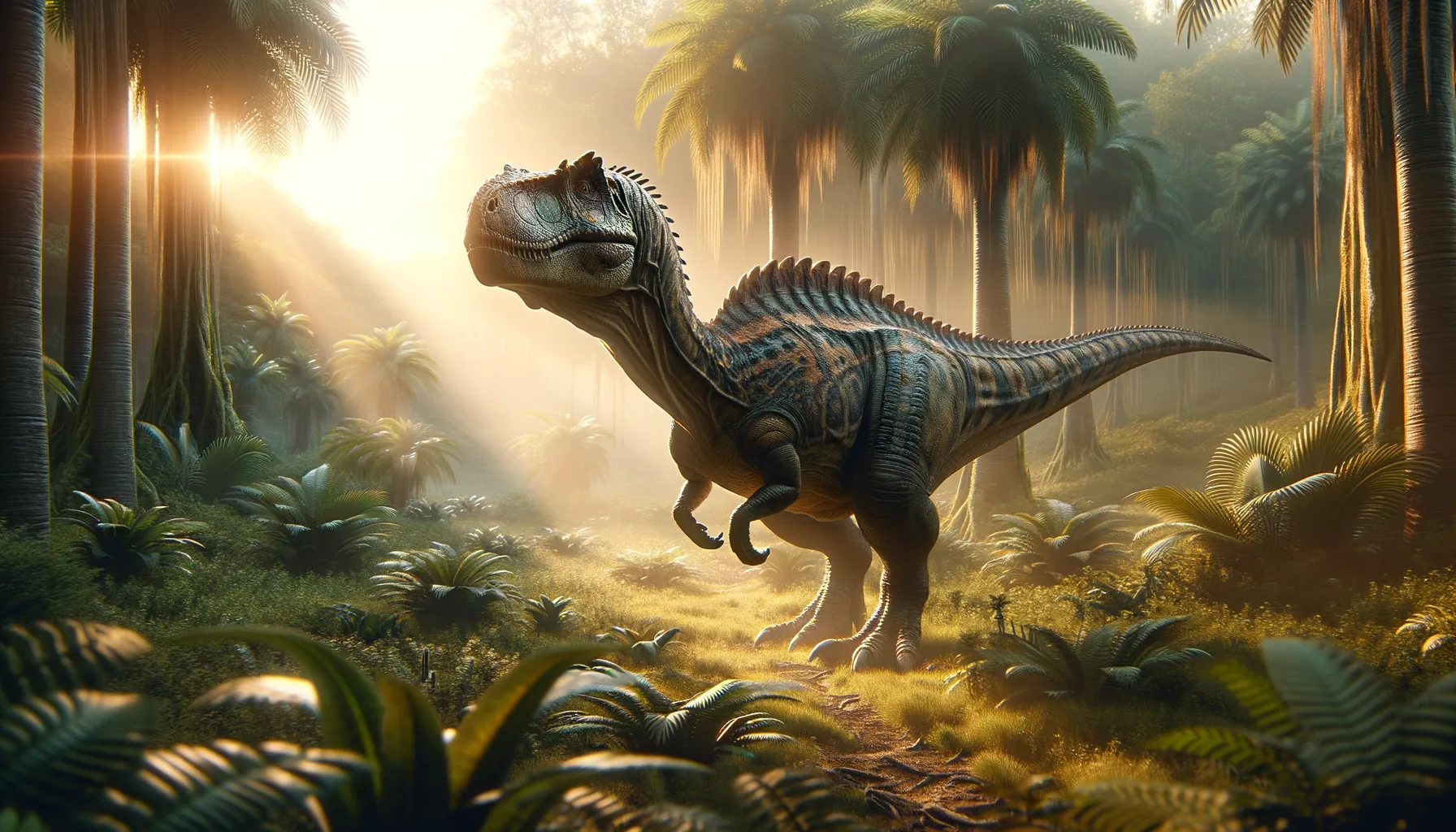
Chialingosaurus
Armored guardian of the Jurassic wild.
Period
Jurassic
Length
Grew up to around 4 meters in length.
Height
Stood about 2 meters tall at the hips.
Weight
Weighed approximately 500 kilograms.
Chialingosaurus was a small, herbivorous dinosaur known for its bony armor along the back and tail. This Jurassic-era creature roamed the regions that are now part of China. As a slow-moving dinosaur, it relied on its armor for protection against predators. Its fossils have provided valuable insight into the early development of armored dinosaurs across the globe.
Diet
Chialingosaurus was herbivorous, primarily feeding on low-lying plants and shrubs. Its diet would have consisted mainly of ferns, cycads, and other prehistoric vegetation available during its time.
Hunting
Chialingosaurus did not hunt as it was not carnivorous. Instead, it used its beak-like mouth to pluck vegetation and extract the nutrients necessary for survival.
Environmental challenges
Living during the Jurassic period, Chialingosaurus faced challenges such as changes in climate and vegetation. This era was characterized by a warm climate, supporting lush plant life that periodically changed with geological shifts. Predators also posed a significant threat, prompting adaptations like its bony armor for defense.
Speed
Slow-moving with a steady gait.
Lifespan
Estimated to be around 20 to 30 years.
First discovery
First discovered in Sichuan, China, in 1959.
Fun Facts
- Chialingosaurus was a type of dinosaur known as a stegosaur, which is famous for its distinctive back plates and spiked tail.
- This dinosaur lived during the Late Jurassic period, around 160 million years ago.
- Chialingosaurus is one of the oldest known stegosaurs, giving scientists insights into the early evolution of this group.
- It was discovered in China, making it an important part of the country's rich dinosaur fossil record.
- Unlike some of its larger stegosaur relatives, Chialingosaurus was relatively small, likely reaching about 13 feet in length.
- The name Chialingosaurus means 'Chialing lizard', named after the region where its fossils were found.
- While its back plates were smaller than some other stegosaurs, they might have been used for display or temperature regulation.
Growth and Development
Chialingosaurus likely experienced growth spurts similar to modern reptiles, maturing relatively quickly to evade predators. As they grew, their bony plates developed and hardened, providing better protection. Juveniles might have relied on group living for added safety until they reached a size capable of deterring most predators.
Habitat
Chialingosaurus inhabited what is now China, an area that would have been lush with ferns and other Jurassic vegetation. The region provided ample resources for its herbivorous diet. The rich, diverse ecosystem included various plant and animal life forms, creating a complex web of interactions.
Interaction with other species
As a herbivore, Chialingosaurus likely lived alongside other plant-eating dinosaurs, possibly in herds, to maximize food resources. These groups would need to be vigilant, as larger predators roamed the same environments. Interaction with other species was mostly peaceful but involved competition for food.
Natural lifespan
Chialingosaurus had a natural lifespan of approximately 20 to 30 years.
Reproduction
Chialingosaurus likely laid eggs, like most dinosaurs, with reproductive behaviors possibly involving nesting and parental care. Little is known about their specific breeding rituals, but they likely shared common traits with other similar-sized herbivorous dinosaurs of the time.
Social behaviour
Chialingosaurus may have exhibited herd behavior, forming groups to better protect against predators and navigate their environment. Such social structures would help juveniles survive until their protective armor developed fully. Communication within the herd could have included visual signals and vocalizations.
Fossil locations
Fossils of Chialingosaurus have primarily been found in Sichuan Province, China. These discoveries have contributed to the understanding of stegosaur evolution and diversity. The fossils, including partial skeletons, provide crucial data for paleontologists studying Jurassic ecosystems.
